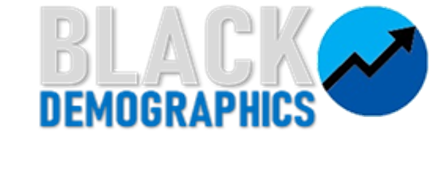October 19, 2024
Georgia’s Black population could be the deciding factor in the 2024 presidential election. Among all swing states, Georgia has the largest Black voting population, making up a larger percentage of the state’s electorate compared to the others. In 2020, Georgia flipped in favor of the Democratic candidate by a slim margin of 11,779 votes for the first time since 1992, underscoring the state’s significant influence of its voters.
As a crucial swing state, the economic wellbeing of Black Georgians could significantly influence national outcomes. Examining whether the community has genuinely benefited economically since 2019 is essential, especially considering the dual impact of the COVID-19 pandemic, inflation, and the policies implemented under both the Trump and Biden administrations.
The Pandemic, Inflation, and Administrative Responses Affecting Black Georgians
The COVID-19 pandemic has been an unprecedented global crisis, affecting economies worldwide. In the United States, the pandemic’s onset in early 2020 led to widespread lockdowns, business closures, and supply chain disruptions1. The federal response under the Trump administration and later the Biden administration included significant fiscal stimulus to support individuals and businesses23. While these measures aimed to mitigate economic fallout, they have been associated with rising inflation, impacting the cost of living for many Americans, including Black Georgians4.
Black Earnings Up, But Are Black Georgians Really Better Off?
Black Median Household Income (Adjusted for Inflation)
- 2019 (Trump Administration): $47,0965
- 2023 (Biden Administration): $58,7396
This represents a 25% increase over four years. Initially, this suggests improved financial health for Black households.
Black Per Capita Income (Adjusted for Inflation)
- 2019: $24,2155
- 2023: $31,4096
An increase of 30% indicates that individual earnings among Black Georgians have risen.
Impact of Administrative Policies on Black Income
Under the Trump administration, the economy experienced growth with low unemployment rates before the pandemic7. The Tax Cuts and Jobs Act of 2017 aimed to stimulate economic growth through tax reductions8, but critics argue that benefits were unevenly distributed and did not significantly uplift Black communities9.
The Biden administration implemented policies like the American Rescue Plan Act of 2021, providing direct financial assistance to individuals and additional support for businesses310. While these measures injected money into the economy to aid recovery, they also contributed to inflationary pressures affecting Black consumers411.
The Reality Check for Black Georgians
Despite the increase in income, inflation has eroded purchasing power4. The combination of expansive fiscal policies from both administrations and supply chain disruptions led to higher prices for essentials like food, housing, and fuel12. Consequently, even with higher nominal earnings, many Black Georgians may not feel financially better off than they were in 2019.
The Black Georgia Housing Conundrum: A Roof Over Their Heads
Median Home Value for Black Homeowners
- 2019: $164,4005
- 2023: $285,8006
An alarming 74% increase. Rising home values can benefit existing Black homeowners through increased equity but make homeownership less attainable for first-time Black buyers.
Median Gross Rent for Black Renters
- 2019: $1,0035
- 2023: $1,3326
Rents have increased by 33%, with 61% of Black renters spending over 30% of their income on housing6.
Impact of Administrative Policies on Black Housing in Georgia
During the Trump administration, policies focused on deregulation aimed to boost the housing market13. However, affordable housing initiatives targeting Black communities were limited, potentially contributing to rising costs14.
The Biden administration has proposed investments in affordable housing through initiatives like the Build Back Better plan, aiming to address housing shortages and affordability15. While these efforts are ongoing, the immediate impact on housing costs for Black Georgians has yet to be realized.
Pandemic’s Influence on Black Housing
The pandemic intensified housing market pressures under both administrations. Low interest rates and high demand increased prices, while supply chain issues hindered new construction16. Black communities, often facing systemic barriers, may have been disproportionately affected17.
Black Poverty in Georgia: A Stubborn Adversary
Percentage of Black People Below Poverty
- 2019: 19%5
- 2023: 19%6
Despite economic interventions, the Black poverty rate remains unchanged.
Impact of Administrative Policies on Black Poverty
The Trump administration‘s focus on broad economic growth did not significantly reduce poverty rates among Black Americans18. Limited targeted social programs may have hindered progress in reducing Black poverty19.
The Biden administration expanded the Child Tax Credit and increased food assistance benefits temporarily3/20. While these measures provided short-term relief to many Black families, the expiration of such programs could explain the persistent poverty rates21.
Black Education in Georgia: Climbing the Ladder Amidst Challenges
Black Bachelor’s Degree or Higher
- 2019: 25%5
- 2023: 29%6
- Black Males: From 21% to 24%56
- Black Females: From 29% to 34%56
Impact of Administrative Policies on Black Education
Under both administrations, federal support for higher education continued, but challenges remained. The Trump administration proposed cuts to federal education funding and limited relief for student borrowers22, which could have disproportionately affected Black students.
The Biden administration has attempted to address student debt through proposed loan forgiveness and increased Pell Grant funding23. However, these initiatives have faced obstacles, and their impact on Black students is still unfolding.
Pandemic’s Influence on Black Education
Remote learning during the pandemic posed significant challenges, particularly for Black students lacking access to technology and resources, potentially widening educational disparities24.
Black Health and Connectivity in Georgia: Steps Forward Amid Crisis
Black Health Insurance Coverage
- With Private Health Insurance: Increased from 60% to 61%56
- Without Health Insurance: Decreased from 14% to 11%56
Impact of Administrative Policies on Black Health
The Trump administration sought to repeal the Affordable Care Act (ACA)25, which could have reduced coverage for many Black Americans. The Biden administration has worked to strengthen the ACA, potentially contributing to increased insurance coverage among Black Georgians26.
Black Technological Access
- Black Households with a Computer: Increased from 91% to 96%56
- Black Households with Broadband Internet: From 81% to 91%56
Impact of Administrative Policies on Black Connectivity
Both administrations recognized the importance of broadband access. The Biden administration‘s Infrastructure Investment and Jobs Act includes significant funding for broadband expansion, aiming to bridge the digital divide affecting Black communities27.
Black Employment: Stability Amid Turbulence
Black Employment Status
- Employed Black Population: Increased from 60% to 61%56
- Black Unemployment Rate: Remained steady around 5%28
Impact of Administrative Policies on Black Employment
Under the Trump administration, unemployment rates reached historic lows before the pandemic7 but did not eliminate the employment gap between Black and White Americans29. The Biden administration focused on economic recovery, but wage growth for Black workers may not be keeping pace with inflation30.
What Does This Mean for Black Voters in the 2024 Election?
Economic Priorities Influenced by Administrative Actions
- Black Housing Affordability: Policies from both administrations have yet to effectively address the housing affordability crisis in Black communities1415. Voters may prioritize candidates offering concrete solutions.
- Economic Inequality Affecting Black Georgians: Persistent poverty rates highlight the need for targeted policies19/21. The differing approaches of the Trump and Biden administrations to social welfare programs may influence Black voter perceptions.
- Cost of Living and Inflation Impacting Black Households: The impact of pandemic relief measures on inflation is a contentious issue4/11. Black voters may scrutinize how each administration’s policies have contributed to rising costs.
Voter Considerations
Black Georgians may evaluate how the policies of both administrations have directly affected their economic wellbeing. With the pandemic and inflation influencing daily life, voters are likely to consider which candidates have the most effective plans to address these challenges within Black communities.
Final Thoughts
The economic landscape for Georgia’s Black population since 2019 has been shaped by the pandemic, inflation, and the policies of both the Trump and Biden administrations. While there have been areas of progress, significant challenges persist. Inflation has eroded purchasing power, and not all members of the Black community have benefited equally from economic initiatives.
As the 2024 presidential election nears, understanding how administrative actions have impacted key issues is crucial. Advocating for policies that address the lingering effects of the pandemic, curb inflation, and promote equitable economic growth is essential to ensure that advancements lead to real improvements in daily life for Black Georgians.
Sources
- Centers for Disease Control and Prevention. (2020). CDC Museum COVID-19 Timeline. ↩
- U.S. Department of the Treasury. (2020). The CARES Act Works for All Americans. ↩
- The White House. (2021). American Rescue Plan. ↩ ↩2 ↩3
- U.S. Bureau of Labor Statistics. (2023). Consumer Price Index Summary. ↩ ↩2 ↩3 ↩4
- U.S. Census Bureau. (2019). American Community Survey 1-Year Estimates. ↩ ↩2 ↩3 ↩4 ↩5 ↩6 ↩7 ↩8 ↩9 ↩10 ↩11 ↩12 ↩13
- U.S. Census Bureau. (2023). American Community Survey 1-Year Estimates. ↩ ↩2 ↩3 ↩4 ↩5 ↩6 ↩7 ↩8 ↩9 ↩10 ↩11 ↩12 ↩13 ↩14
- U.S. Bureau of Labor Statistics. (2020). Employment Situation Summary. ↩ ↩2
- Congress.gov. (2017). H.R.1 – Tax Cuts and Jobs Act. ↩
- Center on Budget and Policy Priorities. (2018). Tax Law Hands Out Massive Tax Cuts to the Wealthy and Corporations. ↩
- U.S. Department of the Treasury. (2021). American Rescue Plan: Treasury Department Efforts. ↩
- The Wall Street Journal. (2021). Inflation Rises as Economy Rebounds. ↩ ↩2
- Federal Reserve Bank of St. Louis. (2023). FRED Economic Data – Inflation. ↩
- The White House Archives. (2017). Presidential Executive Order on Enforcing the Regulatory Reform Agenda. ↩
- National Low Income Housing Coalition. (2019). The Gap: A Shortage of Affordable Homes. ↩ ↩2
- The White House. (2021). Fact Sheet: The Build Back Better Framework. ↩ ↩2
- National Association of Realtors. (2021). Housing Is Key to Economic Recovery. ↩
- Urban Institute. (2020). How the COVID-19 Pandemic Could Increase Housing Disparities. ↩
- U.S. Census Bureau. (2020). Income and Poverty in the United States: 2019. ↩
- Brookings Institution. (2020). Examining the Black-white wealth gap. ↩ ↩2
- U.S. Department of Agriculture. (2021). USDA Increases SNAP Benefits. ↩
- CNBC. (2022). Child Tax Credit Expiration Leads to Increased Child Poverty. ↩ ↩2
- U.S. Department of Education. (2017). FY 2018 Budget Summary. ↩
- U.S. Department of Education. (2021). Fact Sheet: Public Service Loan Forgiveness (PSLF) Program Overhaul. ↩
- Pew Research Center. (2020). Kids’ Online Learning Isn’t Equal. ↩
- The White House Archives. (2017). Executive Order Minimizing the Economic Burden of the Patient Protection and Affordable Care Act. ↩
- The White House. (2021). Executive Order on Strengthening Medicaid and the Affordable Care Act. ↩
- U.S. Department of Commerce. (2021). Fact Sheet: Department of Commerce Announces Funding Opportunity for Broadband Infrastructure Program. ↩
- U.S. Bureau of Labor Statistics. (2023). Labor Force Statistics from the Current Population Survey. ↩
- Economic Policy Institute. (2019). State of Working America Wages 2019. ↩
- Reuters. (2022). U.S. Wage Growth Struggles to Keep Pace with Inflation. ↩

